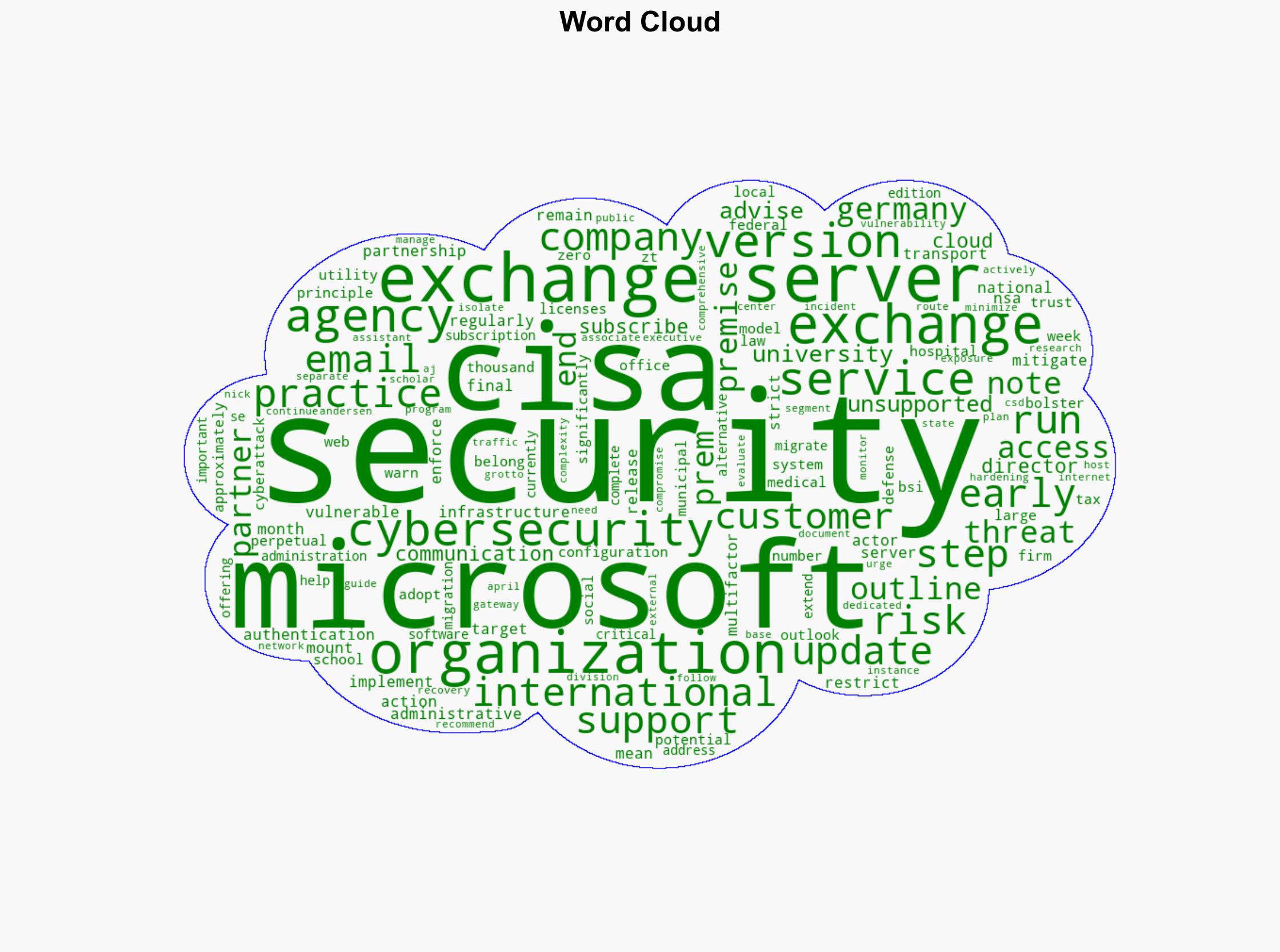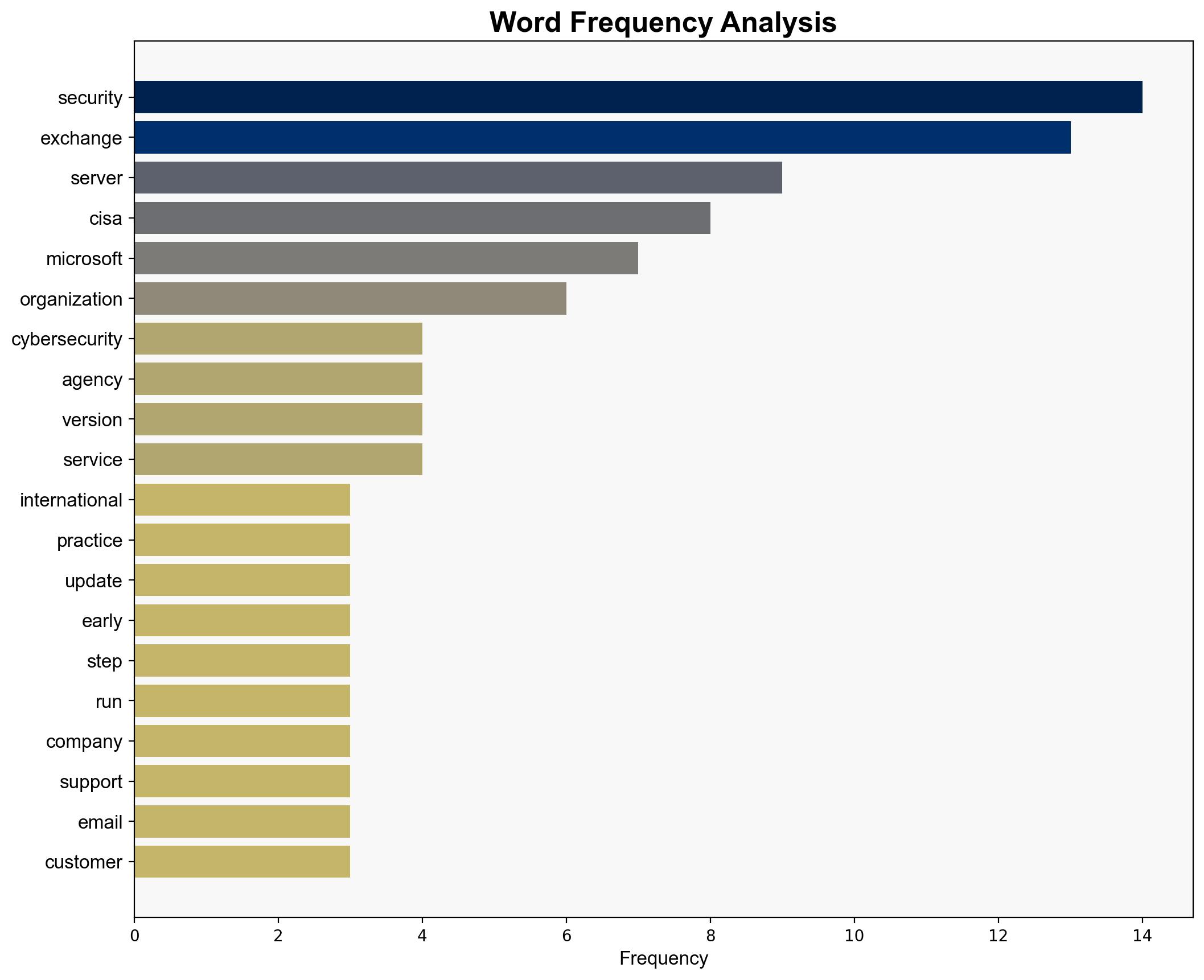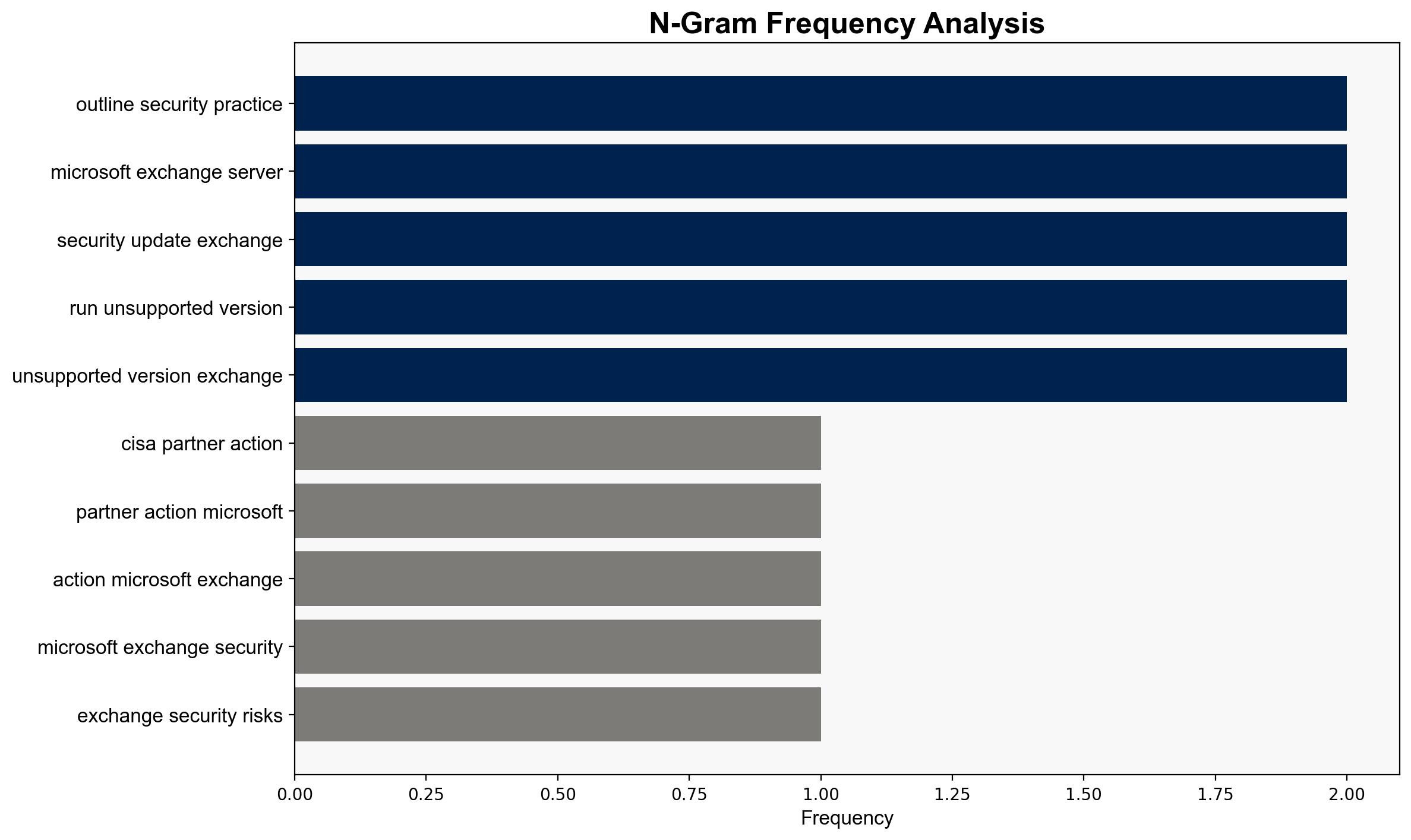CISA and partners take action as Microsoft Exchange security risks mount – Help Net Security
Published on: 2025-10-31
Intelligence Report: CISA and partners take action as Microsoft Exchange security risks mount – Help Net Security
1. BLUF (Bottom Line Up Front)
The most supported hypothesis is that the vulnerabilities in Microsoft Exchange Server represent a significant ongoing risk to organizations globally, necessitating immediate and coordinated mitigation efforts. Confidence Level: High. Recommended action includes migrating to supported versions or alternative solutions, implementing robust security practices, and enhancing monitoring and incident response capabilities.
2. Competing Hypotheses
1. **Hypothesis A**: The vulnerabilities in Microsoft Exchange Server are primarily due to Microsoft’s negligence in maintaining security updates, leading to increased risks for organizations using outdated versions.
2. **Hypothesis B**: The vulnerabilities are a result of sophisticated threat actors exploiting inherent complexities in legacy systems, necessitating a shift towards more secure, cloud-based solutions.
Using the Analysis of Competing Hypotheses (ACH) 2.0, Hypothesis B is better supported due to the emphasis on the need for migration to cloud-based solutions and the involvement of international cybersecurity agencies highlighting the systemic nature of the threat.
3. Key Assumptions and Red Flags
– **Assumptions**: It is assumed that organizations have the resources and willingness to migrate to more secure systems. There is also an assumption that cloud-based solutions inherently offer better security.
– **Red Flags**: The potential bias in attributing negligence solely to Microsoft without considering the complexity of maintaining legacy systems. Lack of detailed data on the nature and frequency of the threats.
4. Implications and Strategic Risks
The continued use of unsupported Microsoft Exchange versions poses significant risks, including potential data breaches, operational disruptions, and financial losses. The situation could escalate if threat actors target critical infrastructure sectors, leading to broader economic and geopolitical consequences. There is also a risk of decreased trust in Microsoft’s ecosystem, impacting its market position.
5. Recommendations and Outlook
- Organizations should prioritize migrating to supported versions or alternative secure solutions.
- Implement comprehensive security measures, including multifactor authentication and zero trust models.
- Enhance monitoring and incident response capabilities to quickly detect and mitigate breaches.
- Scenario Projections:
- Best Case: Successful migration and implementation of security measures lead to reduced vulnerabilities.
- Worst Case: Widespread exploitation of vulnerabilities results in significant data breaches and operational disruptions.
- Most Likely: Gradual improvement in security posture as organizations adopt recommended practices.
6. Key Individuals and Entities
– Nick Andersen
– Aj Grotto
– Microsoft
– CISA
– NSA
– Germany’s Federal Office for Security (BSI)
7. Thematic Tags
national security threats, cybersecurity, counter-terrorism, regional focus





